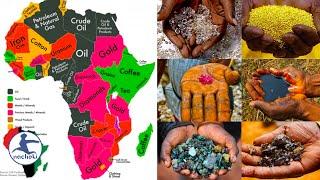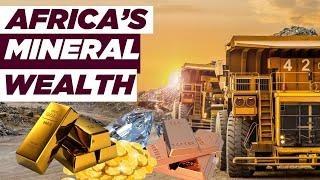Top 10 African Countries With the Least Natural Resources
Description
Top 10 African Countries with The Least Natural Resources
Welcome to Displore and thanks for watching. In this video we shall be looking at the top 10 African countries with the least natural resources. Africa is a continent of abundance and diversity in every aspect from its people, to its culture and the abundant resources on the continent. Each country on the continent is unique and special in its own way. Some countries in Africa have large quantity of natural resources, including diamond, sugar, salt, gold, iron, cobalt, uranium, copper, bauxite, silver, petroleum, cocoa beans, woods and tropical fruits etc.Recent oil reserve discoveries have increased the diversity of the commodities on the African continent with the United States and Europe being the highest buyers of Africa’s natural resources. Despite the fact Africa is blessed with all these natural resources, It is still one of the poorest continent in the world. We have a two part video on Why Africa is so Poor, Click on the card on the left end corner of your screen to check it out.
If you are new here, welcome. Be sure to subscribe and turn on notification so that you don’t miss any of our videos.
Despite the abundance of natural resources on the African continent, it is not evenly distributed amongst its countries. Some African countries have abundant of these natural resources while other barely have any and as a result have to find other creative ways to boast their economies. So ,In no particular order here are the top 10 African countries with the least natural resources.
10. Seychelles
Seychelles is one of the most developed countriesz in Africa with very high per capital income and a high Human Development Index of 0.80. The economy of Seychelles relies on tourism, fishing, boat building, printing, beverages, furniture, and processing of coconut, copra, and vanilla because of the fact that the natural resources in Seychelles are very relatively small compared to most African countries. The natural resources of Seychelles are fish, wildlife, coconuts, and cinnamon.There has been speculations of offshore natural oil and gas in Seychelles but all exploration attempts to find it has been fruitless.Multinational oil companies have explored the waters around the islands, no oil or gas has been found. In 2005, a deal was signed with US firm Petroquest, giving it exploration rights to about 30,000 km2 around Constant, Topaz, Farquhar and Coëtivy islands until 2014. Seychelles imports oil from the Persian Gulf, Kuwait, and Bahrain in the form of refined petroleum derivatives at the rate of about 5,700 barrels per day. Despite the fact that the country is not lucky to have most of Africa’s Natural resources, it is still one of the best countries in Africa to live in.
9. Sao Tome and Principle
Sao Tome and Principle is a country made up of four islands namely Sao Tome, Principe, Annobon, and Bioko. Three-quarters of the country is rainforest although most of the lowland’s forests have been cleared for palm and coconut tree plantations. The forests are mostly inaccessible and cannot support farming which makes them an ideal haven for endemic and threatened species of fauna and flora. With 30% of the land being a national park, agriculture is not widely practiced even though the soil is very rich. The rich volcanic soil and close proximity to the Equator made São Tomé and Príncipe ideal for sugar cultivation, followed later by cash crops such as coffee and cocoa; the lucrative plantation economy was heavily dependent upon imported African slaves. However, the country’s topography provides a conducive environment for hydropower and fishing which are the major natural resources in the island. The island has over 230 species of fish with the most famous fish include the gigantic sailfish, barracuda, and wahoo, in addition to dolphins, and numerous species of tuna such as the Atlantic Bluefin tunas.
8. Cape Verde
Located 570km west of the Cape Verde Peninsula off the coast of Northwest Africa, Cape Verde is made up of 10 islands which cover a combined area of 4,033km2 with a population of about 550,000people. Only five of the ten main islands in Cape Verde Santiago, Santo Antão, São Nicolau, Fogo, and Brava normally support significant agricultural production as over 90% of all food consumed in Cape Verde is imported. Mineral resources include salt,Gypsum, basalt rocks, kaolin pozzolanaa volcanic rock used in cement production, limestone and off course fish.Cape Verde has experienced notable economic growth and improvement in living conditions despite a lack of natural resources and has garnered international recognition with other countries and international organizations often providing development aid to the Island.





















Comments